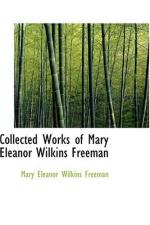|
This section contains 9,092 words (approx. 31 pages at 300 words per page) |

|
SOURCE: “Signs of Undecidability: Reconsidering the Stories of Mary Wilkins Freeman,” in Crossing the Double-Cross: The Practice of Feminist Criticism, University of North Carolina Press, 1986, pp. 21–38.
In the essay below, Meese discusses how Freeman uses conflicting cultural/literary, public/private, and personal/social codes to portray the complexity of the feminine gender. Meese also criticizes early biographers and commentators for misreading Freeman's works as well as misunderstanding their author.
Recent developments in critical strategies for approaching texts and new understandings of how the patriarchal regime of truth plays within criticism equip us for the defensive, resistant re-reading of women's writing that critics like Annette Kolodny and Judith Fetterley urge us to undertake. By exposing the masculinist misreadings upon which criticism has relied, we can begin to understand more specifically what it means for women writers to become feminist writers. The case of the New England local colorist Mary...
|
This section contains 9,092 words (approx. 31 pages at 300 words per page) |

|


